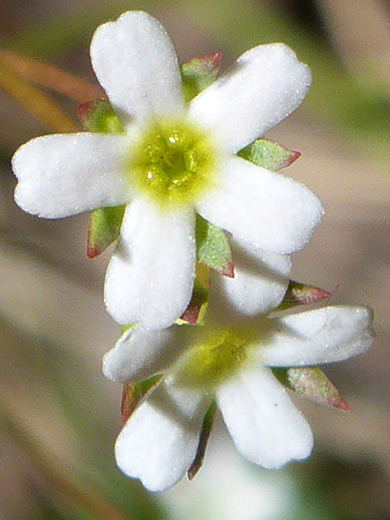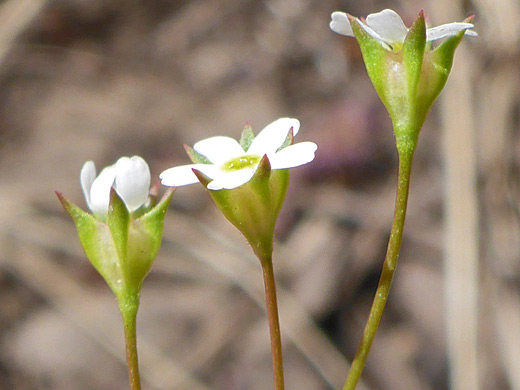Androsace Septentrionalis, Rock Jasmine
Plants > Wildflowers > Primulaceae > Androsace Septentrionalis
Common names:
Rock jasmine, pygmyflower
Family:
Scientific name:
Androsace septentrionalis
Main flower color:
Range:
The Rocky Mountain states, westwards to the Great Basin, and small areas of neighboring states
Height:
Between 1 and 8 inches
Habitat:
Grassland, forest, tundra; generally open areas, from sea level to 11,500 feet
Leaves:
Basal, oblanceolate, up to 1.2 inches long and 0.4 inches across; entire or coarsely toothed edges
Season:
March to September
Androsace septentrionalis is a small-flowered and rather inconspicuous plant, and is the most common member of this genus in the West, out of six in the US. Plants are very variable in size, reflecting the wide range of habitats and elevations - from near sea level to over 11,000 feet. Stalkless leaves grow at the base, in a flat rosette, and often have a few teeth along the margins, and ciliate hairs. Leaf surfaces may be hairless or sparsely short hairy.
Plants typically produce between 1 and 5 leafless flower stalks, which divide near the top into between 5 and 20 pedicels of unequal length (and ranging from 0.1 to 2.3 inches), each topped by a small, white, five-petaled flower, enclosed by a green or reddish calyx, either larger or comparable in size. Each pedicel is subtended at its base by a narrow, lance-shaped bract. The calyx is bell-shaped, and has five lobes, extending from pronounced ridges towards the base. Fruits are greenish capsules, approximately spherical in shape. All plant parts become reddish as they wither.
Plants typically produce between 1 and 5 leafless flower stalks, which divide near the top into between 5 and 20 pedicels of unequal length (and ranging from 0.1 to 2.3 inches), each topped by a small, white, five-petaled flower, enclosed by a green or reddish calyx, either larger or comparable in size. Each pedicel is subtended at its base by a narrow, lance-shaped bract. The calyx is bell-shaped, and has five lobes, extending from pronounced ridges towards the base. Fruits are greenish capsules, approximately spherical in shape. All plant parts become reddish as they wither.
All Contents © Copyright The American Southwest | Comments and Questions | Contribute | Site Map











